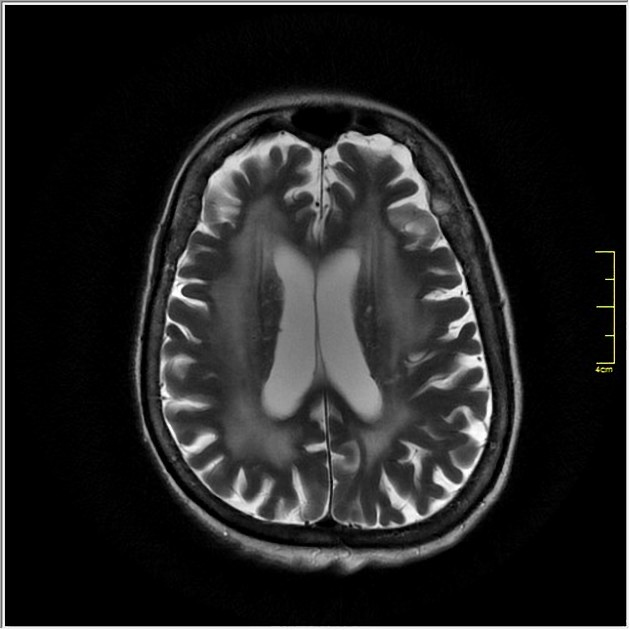

BINSWANGER'S DISEASE
Binswanger disease is a progressive neurological disorder caused by arteriosclerosis and thromboembolism affecting the blood vessels that supply the white-matter and deep structures of the brain (basal ganglia and thalamus).
PATHOPHYSIOLOGY -The damage is the result of the thickening and narrowing (atherosclerosis) of arteries that feed the subcortical areas of the brain. Atherosclerosis (commonly known as "hardening of the arteries") is a systemic process that affects blood vessels throughout the body. It generally begins late in the fourth decade of life and increases in severity with age.
CAUSES:
Binswanger disease is caused by arteriosclerosis, thromboembolism and other diseases that obstruct blood vessels that supply the deep structures of the brain. Hypertension, smoking, hypercholesterolemia, heart disease and diabetes mellitus are risk factors for Binswanger disease. Rare hereditary diseases such as CADASIL (cerebral autosomal dominant arteriopathy with subcortical infarcts and leukoencephalopathy) also cause Binswanger disease.
SIGNS & SYMPTOMS:
Depression, uncaring (apathetic), inactive, and unable to act or make decisions (abulic). They become withdrawn, and exhibit poor judgement, reduced planning and organizational skills, and less spontaneous communication.
In addition, affected individuals may have difficulty with speech (dysarthria), swallowing (dysphagia), and urinary bladder control (incontinence).
Some patients exhibit abnormalities that are similar to those seen in Parkinson disease, such as slowness, poor balance and short, shuffling steps (Parkinsonism),changes in speech, an unsteady gait, clumsiness or frequent falls, changes in personality or mood.
DIAGNOSIS:
The diagnosis of Binswanger disease is usually based on a thorough clinical evaluation, including a detailed patient history, physical examination, and magnetic resonance imaging (MRI) or computerized tomography (CT) scanning of the brain. MRI and CT reveal nerve fiber (white matter) degeneration and multiple small strokes in the deep structures of the brain
HOMOEOPATHIC MANAGEMENT:
Medorrhinum - -Weak memory. Loses the thread of conversation. Cannot speak without weeping. Time passes too slowly. Is in a great hurry. Hopeless of recovery. Difficult concentration. Fears going insane
Natrum Sulphuricum - Inability to think. Dislikes to speak, or to be spoken to.
CAUSTICUM - Child does not want to go to bed alone. Least thing makes it cry. Sad, hopeless. Intensely sympathetic, Paralysis of single parts. Dull, tearing pain in hands and arms. Heaviness and weakness. Tearing joints. Unsteadiness of muscles of forearm and hand. Numbness; loss of sensation in hands. Contracted tendons
LOLIUM TEMULENTUM - It is prescribed when the gait is unsteady, trembling of all limbs, cannot write, cannot hold a glass of water. There is spasm of arms and legs. Violent pain in calves, as if bound by a cord.
AMBRA GRESIA - It is prescribed when tremors with numbness are present. Limbs go to sleep on the slightest movement. There is coldness and stiffness of limbs. The finger nails become brittle and are shriveled.
BARYTA CARB -. A paralytic condition runs throughout the body. There is paralysis of mind and body. There is deficient memory, mistrust, want of self confidence, aversion to strangers. Vertigo with nausea on stooping. Pressure and sticking pain in brain, at vertex on walking.
RHUS TOXICODENDRON - There is paralysis and trembling after exertion. The tremors start with pain which is relieved by motion. Crawling and tingling sensation in the tips of fingers are present.
GELSEMIUM - dizziness, drowsiness, dullness and trembling are present. There is paralysis of various groups of muscles like eyes, throat, chest, sphincters and extremities and muscles of the head. There is staggering gait and loss of power of muscular coordination.
MERCURIUS - Where weakness of limbs, trembling of extremities, especially hands are present. There is lacerating pain in joints. There is weakness with trembling from least exertion. Cold and clammy sweat present on limbs. Complaints increase during sweating and rest. All symptoms are aggravated at night, warmth of bed, damp, cold rainy weather and during perspiration.
ARGENTUM NITRICUM - When paralysis with mental and abdominal symptoms are present. It is complementary to Gelsemium. Argentum nitricum patients are easily excited and angered. Their lack of incoordination, loss of control and imbalance with trembling and general debility and rigidity in calves' muscles. Argentum nitricum patients walks and stands unsteadily. Associated with flatulence and greenish diarrhea are present.
AGARICUS MUSCARIUS - trembling, itching, and jerking are present. There is stiffness of the muscles and itching of skin over the affected part and extreme sensitiveness of the spine. Chorea and twitching ceases during sleep. The patient cannot bear touch.
COCCULUS INDICUS - the hand trembles while eating and when it is raised higher. Knees sink down from weakness. Totters while walking with a tendency to fall on one side. Cracking of the knee when moving. One sided paralysis worse after sleep
LATHYRUS SATIVA - Tremors of the upper extremities with paralytic weakness of the lower limbs. Feels as if limbs are hard and contracted; limbs feel heavy. Feels as if numb. Tremulous, tottering gait. Excessive rigidity of legs with spastic gait. Knees knock against each other while walking. Cannot extend or cross legs when siting. Stiff and lame ankle
ZINCUM METALLICUM –It is one of the best for Parkinson’s disease with violent trembling of the whole body after emotions. There is paralysis of hands and feet. The hands trembles while writing. Feet in continued motion, cannot keep still. Twitching is found in children.